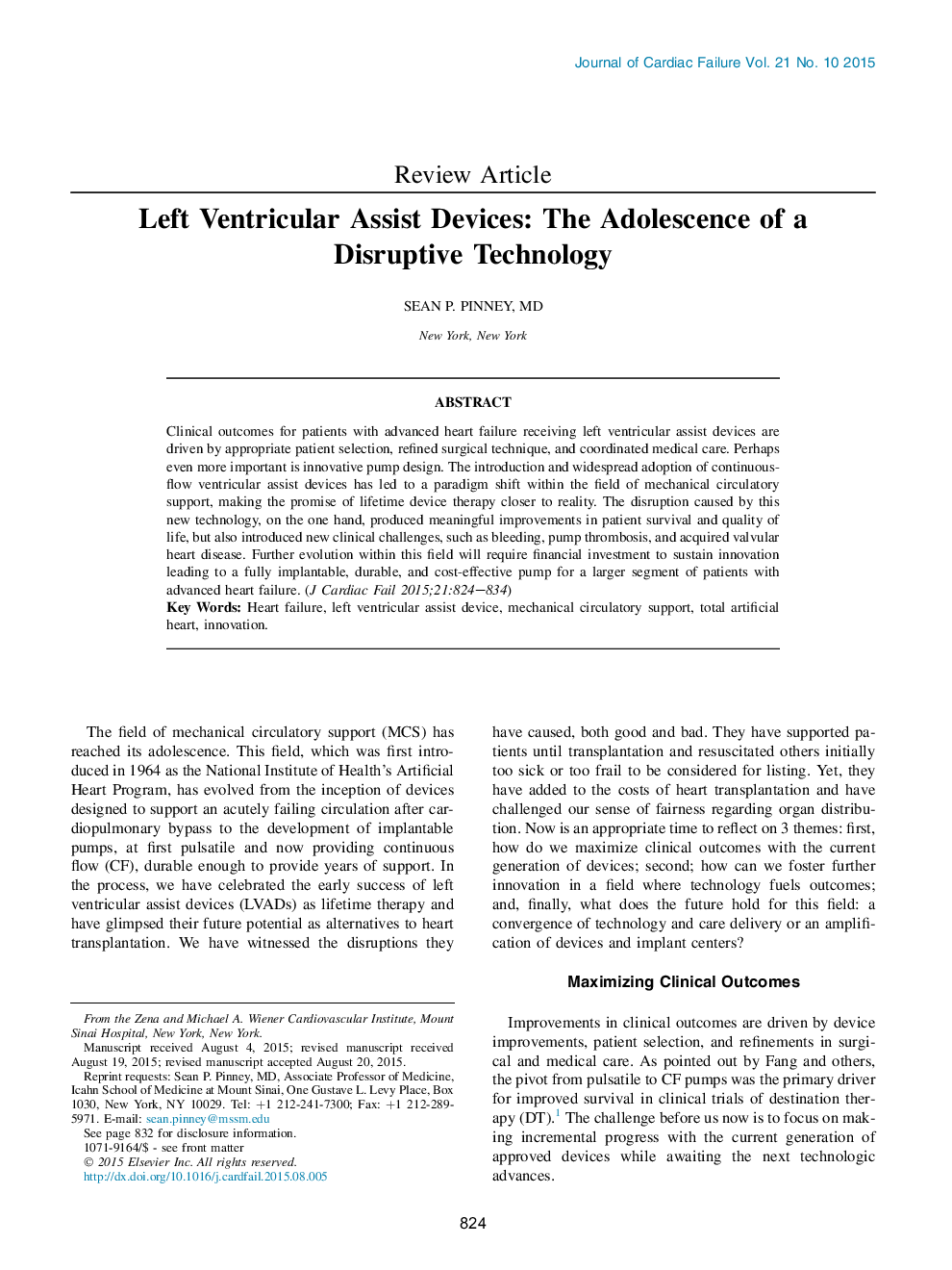| Article ID | Journal | Published Year | Pages | File Type |
|---|---|---|---|---|
| 2958440 | Journal of Cardiac Failure | 2015 | 11 Pages |
•Evolution in pump technology from pulsatile to continuous flow has improved clinical outcomes, bringing the promise of lifetime support closer to reality.•Adverse events, such as bleeding, stroke, and pump thrombosis, as well as the need for frequent rehospitalizations, limit effectiveness and offer a major focus for further pump design improvements.•Patient selection and clinical decision making can be challenging in the setting of complex patient-device interactions. Several unintended consequences have emerged from well meaning interventions aimed at reducing adverse events.•Further miniaturization, improved durability, and the use of regenerative therapies to enhance myocardial recovery are innovative strategies that bring excitement and promise to the field of mechanical support.
Clinical outcomes for patients with advanced heart failure receiving left ventricular assist devices are driven by appropriate patient selection, refined surgical technique, and coordinated medical care. Perhaps even more important is innovative pump design. The introduction and widespread adoption of continuous-flow ventricular assist devices has led to a paradigm shift within the field of mechanical circulatory support, making the promise of lifetime device therapy closer to reality. The disruption caused by this new technology, on the one hand, produced meaningful improvements in patient survival and quality of life, but also introduced new clinical challenges, such as bleeding, pump thrombosis, and acquired valvular heart disease. Further evolution within this field will require financial investment to sustain innovation leading to a fully implantable, durable, and cost-effective pump for a larger segment of patients with advanced heart failure.
